India has a rich historical and archaeological record. Something that may be less known about the Indian subcontinent is its many megalithic sites. Many of these sites are found across India. The megalithic monuments in that region are believed to have been constructed during the Iron Age (1500 BC-200 AD). The Junapani stone circles of Maharashtra are a particularly important network of megalithic structures. Moreover, the Junapani stone circles offer interesting insights as they may have astronomical significance, reflecting the earliest astronomical knowledge of ancient India.
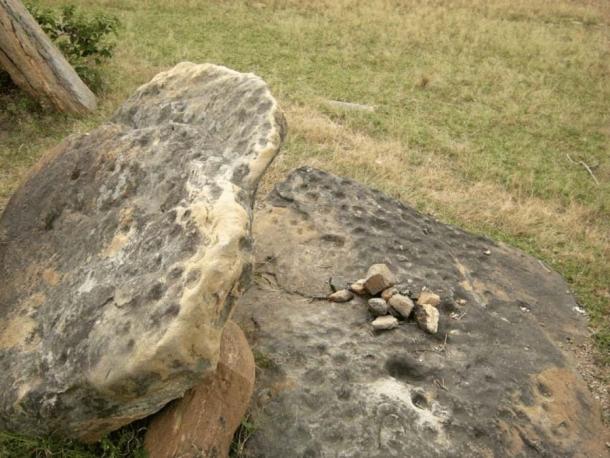
Junapani stones at the Napo megalithic site in Jharkhand, eastern India, which have been marked with cup marks or cupules. (Subhashis Das / Research Gate )
What We Know About The Junapani Stone Circles
The Junapani stone circles are located about 10 kilometres northwest of the city of Nagpur in the Indian state of Maharashtra. The stone circles consist of boulders. Most are true circles, but some are more oblong. The boulders are basalt and appear to have been transported from a considerable distance.
The stone circles are sepulchral, meaning that they mark burial places. The deceased were probably buried within the stone circles and covered with stony material. There are some circles that were not covered with material and appear to be circles that were constructed for a clan or family burial, which were ultimately left unused. There are over 150 stone circles in India, which were probably constructed between 1000 BC and about 300 AD.
What is notable about the megalithic Junapani stone circles are cup marks, or cupules, that are cut into some of the stones making up the circles. The stones that have the cupules are positioned around the circles in a way that suggests that they mark specific directions, such as the direction of the winter solstice sunrise. This has led archaeologists to suggest that the site has astronomical significance. However, researchers also admit that these could be chance alignments.
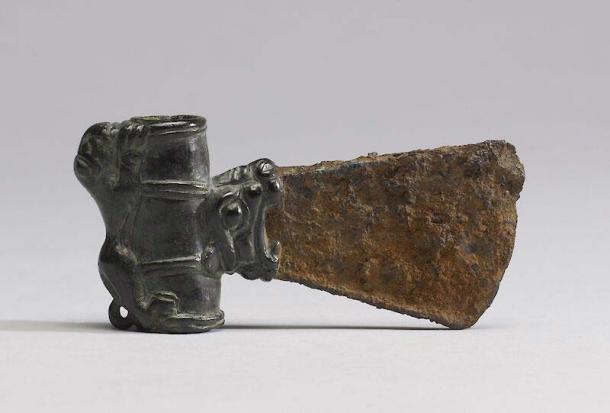
Iron tools like this axe head made it easier to work the huge stones used in megalithic structures. The Junapani cup marks were likely made with iron tools. (The Walters Art Museum / CC0)
The Historical Context Of The Junapani Stone Circles
The reason that people in the Maharashtra region started building these megalithic monuments remains enigmatic. One reason could be technological advances. By 1000 BC, stone and copper tools had been replaced by iron tools . Iron is stronger than stone or copper and would have made it easier to cut into stone. With the appearance of iron tools, the quantity of artifacts and features related to iron increase dramatically in the archaeological record. Although megalithic structures can be constructed without iron implements the development of iron tools would have made the process easier.
There appears to be a precedent in India for constructing megalithic monuments and not just in Maharashtra. Examples of megalithic structures include menhirs, rock-cut chambers, stone circles, dolmens, and cairns. The construction of the earliest stone monuments in India dates to around 3000 BC in the Indus Valley. This practice may have spread from northern India to the south or independent traditions may have developed in different parts of the subcontinent. Either way, what stands out about the megalithic Junapani stone circles is the potential role of astronomy in their construction.
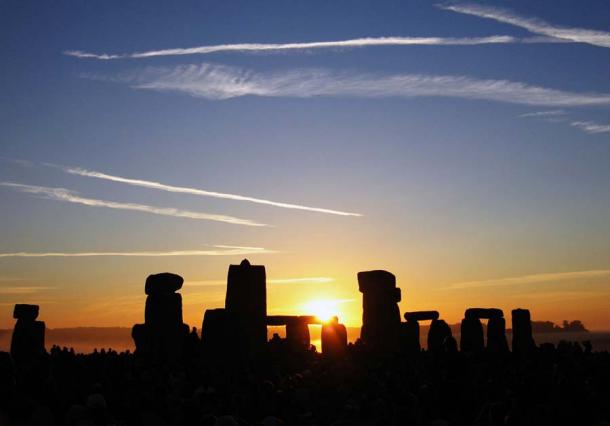
Summer solstice sunrise over Stonehenge. Many megalithic monuments including those in India are astronomically aligned. (Andrew Dunn / CC BY-SA 2.0 )
Megalithic Structures And Indian Astronomy
The Junapani stone circles may reflect an astronomical tradition in India that dates to before 1000 BC. The earliest Indian astronomical text is the Vedanga Jyotisha , said to have been written by an astronomer by the name of Lagadha. The text was written around 1350 BC, a date based on internal information about the recorded celestial positions of the winter solstice and the summer solstice at the time, several centuries before the first stone circles in Junapani were probably built.
In the Vedanga Jyotisha , the author defines a yuga as consisting of five years, 1,830 days, 1,835 sidereal days, 67 lunar sidereal cycles, and 62 synodic lunar months. The author also describes a lunisolar calendrical system in which intercalary months are added to keep the calendar from falling out of sync with the motion of the sun.
The Vedanga Jyotisha arguably laid down the foundations of ancient Indian astronomy, which reached its zenith with the remarkable astronomer and mathematician Aryabhata.
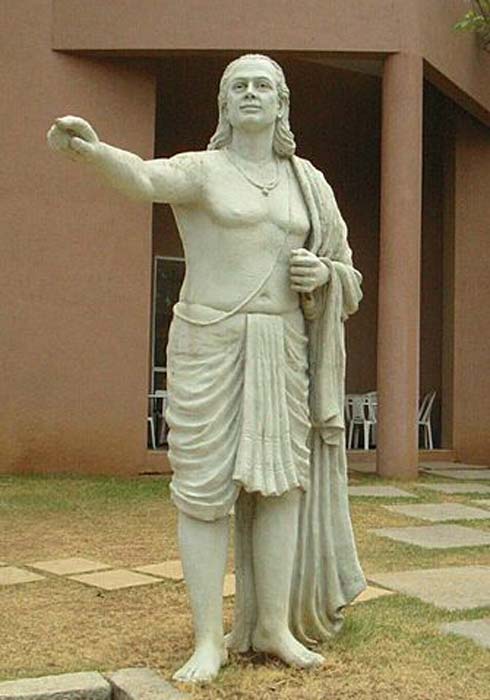
Aryabhata the famous Indian astronomer who used the ideas of India’s earliest astronomical theories to build his more comprehensive view of astronomy. (See page for author / Public domain )
The Link Between Aryabhata And The Junapani Stone Circles
Aryabhata was born around 476 AD and probably lived in the vicinity of the city of Pataliputra near modern-day Patna. He lived during the Gupta dynasty . The Gupta dynasty of northern India began in the early 4th century AD and lasted until the late 6th century AD.
Although now disputed, the Gupta dynasty has been considered by some historians to have ushered in a golden age of intellectual learning, including astronomy. In the centuries after the invasion by Alexander the Great, Greek and Babylonian astronomy came to the Indian subcontinent and Indian astronomers and mathematicians incorporated aspects of Babylonian and Hellenistic astronomy into their native astronomical traditions.
In traditional Hindu cosmology, the likely cosmological beliefs of the Iron Age inhabitants of Maharashtra who built the Junapani stone circles, the universe had three levels, the netherworld, the earth where humans lived, and the heavens. Each level consisted of seven sublevels. The netherworld had seven levels inhabited by demons and serpents. The heavens had seven levels, the highest of which was the realm of Brahman. The earth had seven continents. The middle continent was the one on which humans lived which was surrounded by water. At the centre of this continent was the world mountain and at the southernmost part of this continent was India.
After the conquests of Alexander the Great , a dialogue between Indian and Mediterranean intellectuals began in earnest. This inspired developments in both Mediterranean astronomy and Indian astronomy. It also probably helped to make Greek cosmological ideas about the shape of the earth and the universe more common, although there may also have been native Indian astronomical traditions that already believed in a spherical earth as well. Many Indian rulers, including the Gupta rulers, were patrons of astronomy and other natural sciences. Aryabhata was no doubt one of their beneficiaries. Aryabhata also may have been a professor at the University of Nalanda and may have directed the observatory there.
In his writings, which became seminal works for later Indian and Islamic astronomers, Aryabhata described the motion of the planets and modified the yuga system, among other accomplishments. Aryabhata believed that the universe was geocentric with Earth at the centre. He also used epicycles to explain the motion of the planets as they orbited the centre of the universe.
For Aryabhata, the position of the celestial bodies in order of decreasing distance from Earth was the celestial sphere, Saturn, Jupiter, Mars, the Sun, Venus, Mercury, and the moon. Despite his geocentric views, he appears to have believed that Earth was rotating on its axis. This is also a view that can be found in ancient Chinese astronomical texts.
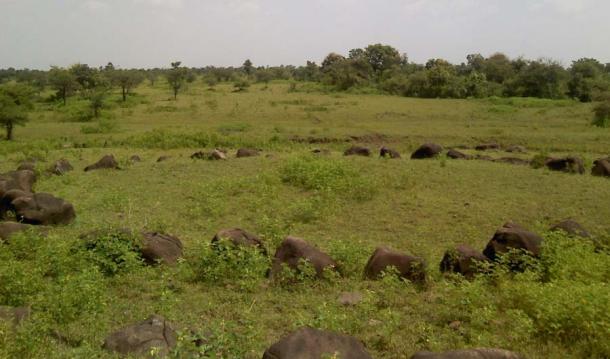
a Junapani stone circle in Maharashtra, India, which are now increasingly viewed as astronomically aligned burial sites. (Ganesh Dhamodkar / CC BY-SA 3.0 )
In addition to astronomy and cosmology, Aryabhata also contributed to timekeeping. In ancient India, the current age of the world was called the Kaliyuga. Aryabhata argued that the Kaliyuga and the other yugas in the Indian yuga system should be based on the motion of the planets and other celestial bodies, which could be modelled mathematically. He also divided the yugas into equal lengths of time. Furthermore, he calculated that the current age of the world began in 3102 BC on February 17th or 18th. It is not clear, however, how he determined this date.
Aryabhata lived thousands of years after the Junapani stone circles were made. Nonetheless, he worked with an astronomical tradition that probably had some continuity with the builders of the stone circles. The astronomical knowledge that the builders of the stone circles used to give the graves of their dead cosmic significance may have eventually been incorporated into a way to scientifically understand the cosmos.
The Junapani stone circles, if they contain astronomical alignments , reveal the depths of the roots of astronomical inquiry in India which continues today as modern India is becoming a leader in space exploration through the Indian Space Research Organization (ISRO).
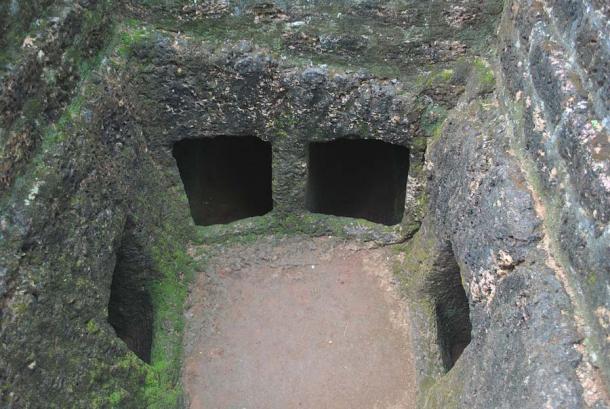
The Chirakkal taluk megalithic burial tomb of Kuttikunnu, Kerala, India. (Narayananknarayanan / CC BY-SA 3.0 )
The Junapani Circles Are Likely Megalithic Burial Structures
Megalithic structures are found across the globe including western Europe, the Americas, and Africa. It is possible that some of these megalithic sites have important astronomical alignments. One of the main purposes in the ancient world for astronomy was probably for telling time and also for the purposes of astrology. The position of the sun, the moon, and certain stars were important for determining the seasons. This was increasingly important in agricultural societies which relied on timekeeping to know when to plant and when to harvest crops. This may be one of the purposes of Stonehenge. Many of the megalithic structures are also associated with burial of the dead.
The Junapani stone circles are probably sepulchral megalithic structures, meaning that they were intended to be tombs. Sepulchral megalithic structures in the area include stone markers to indicate where the dead are interred, such as cairns or stone circles. They also tend to be of human dimensions and often an abstract imitation of some sort of domicile built for the living. The bodies interred may have also been placed in a sarcophagus.
The stone circles appear to have had a dual use as tombs and observatories. India is not the only part of the world where megalithic tombs are thought to have doubled as astronomical observatories. The passage tombs in Ireland are believed to have astronomical alignments marking the position of the sun at the winter solstice. In addition to alignments with celestial bodies, builders of the stone circles also aligned the bodies of the interred to be oriented north-south or east-west. This alignment with the cardinal directions as well as with the celestial bodies suggests a desire to connect deceased relatives or ancestors with the cosmos.
One reason for this connection between the dead and astronomy could simply be that megalithic structures tend to be sturdy and durable, so they are ideal for timekeeping and for monumental tombs. It is possible, however, that there is another less practical connection. It is possible that the tombs were given astronomical alignments to give the lives of the people interred in the tombs a cosmic significance.
Most human individuals are forgotten in a few generations. One way to preserve their memory is through making a significant change to the landscape where they are buried. The Egyptian workers who built the pyramids have long since been forgotten. The pharaohs for whom the pyramids were built continue to be remembered even after thousands of years. Also, even if their names are forgotten, their legacy will continue until the pyramids are finally destroyed either by natural processes or by human actions, such as war.
The people who built these megalithic tombs did not leave any written records and the names of those interred in these sepulchral megalithic tombs have been forgotten. Their legacy, however, has lived on for thousands of years as people continue to notice the mark that they left on the landscape. Astronomical alignments of these tombs also might have functioned to mark the time that they passed away, or at least the time of year. This way, something about the person, or the people, buried there could be remembered by the community.
Additionally, connecting the resting place of the dead to the celestial bodies may have simply added a cosmic significance to their lives. Humans have a deep longing to feel connected to the cosmos. The structure of a person’s tomb aligned with the motion of the celestial bodies would be one way to accomplish that.
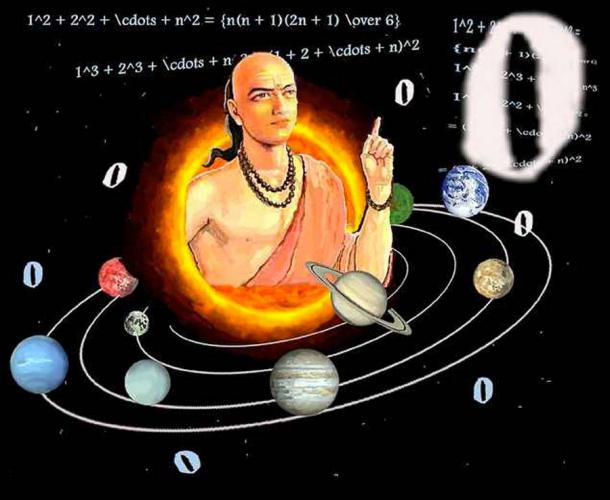
India has a long history of astronomical observation and the Junapani stone circles are clearly part of this tradition. (Aishwarya.kotam / CC BY-SA 4.0 )
Conclusions
The Junapani stone circles are part of a megalithic tradition in India which began around 3000 BC with the Indus River Valley civilization and continued until around 900 AD. The stone circles themselves were all constructed between 1000 BC and 300 AD. They were most likely sepulchral megalithic structures that were constructed to bury the dead. They also appear to have astronomical alignments which make them significant for the history of cultural astronomy in India.
The Junapani stone circles represent an early manifestation of Indian astronomy, a tradition of astronomy that has continuity today in modern India. The true meaning of the stone circles and their hypothetical celestial alignments will probably never be known, but the circles do seem to evoke themes that include immortality and being part of the cosmos.
Megalithic burial structures tend to last for millennia, granting a sort of immortality through a lasting, if enigmatic, legacy. Alignment of stone markings with the motion of the celestial bodies creates a connection with the cosmos.
As such megalithic stone circles may represent the yearnings of humans across all times and cultures for surviving death and being connected to the universe.
Top image: One of the Junapani stone circles in Maharashtra, India, which are now increasingly viewed as astronomically aligned burial sites. Source: Ganesh Dhamodkar, CC BY-SA 3.0
By Caleb Strom
References
Abbas, R. 2014. Cup Marks: Rock Art of Megalithic Junapani stone circles. Open Access Library Journal.
Ansari, S. M. R. 1977. Aryabhata I. His Life and his Contributions . Bulletin of the Astronomical Society of India. Available at: http://adsabs.harvard.edu/full/1977BASI….5…10A
“ARCHAEO ASTRONOMY IN INDIAN CONTEXT.” N.D. Available at: https://www.tifr.res.in/~archaeo/ReviewCommitteeFiles/Report%20for%20review%202010.pdf
Friedlander, M. Wulf and James Evans et al . 2019. Astronomy. Encyclopedia Britannica. Available at: https://www.britannica.com/science/astronomy
Gold, A. G., and Wendy Doniger e t al . 2020. Hinduism. Encyclopedia Britannica. Available at: https://www.britannica.com/topic/Hinduism
Hayashi, T. 2021. Aryabhata. Encyclopaedia Britannica. Available at: https://www.britannica.com/biography/Aryabhata-I
Hill, Bryan. 2015. Adam’s Calendar: Oldest Megalithic Site in the World? Ancient Origins. Available at: https://www.ancient-origins.net/ancient-places-africa/adam-s-calendar-oldest-megalithic-site-world-003160
“Indian Space Research Organization.” Available at: https://www.isro.gov.in/
Kak, S., 2003. Greek and Indian cosmology: review of early history . Available at: https://cds.cern.ch/record/607500/files/0303001.pdf
Misra, V.N., 2001. Prehistoric human colonization of India. Journal of Biosciences. Available at: https://www.ias.ac.in/article/fulltext/jbsc/026/04/0491-0531
Mookerjee, Sitanshu and Wanmali, Sudhir Vyankatesh. 2020. Maharashtra. Encyclopedia Britannica. Available at: https://www.britannica.com/place/Maharashtra.
“Newgrange.” N.D. World Heritage Ireland. Available at: https://www.worldheritageireland.ie/bru-na-boinne/built-heritage/newgrange/
Pearson, M. Parker. 2020. Stonehenge. Encyclopedia Britannica. Available at: https://www.britannica.com/topic/Stonehenge
“Prehistoric Calendar Revealed at Stonehenge.” 2016. Ancient Origins, Available at: https://www.ancient-origins.net/news-history-archaeology/prehistoric-calendar-revealed-stonehenge-006119
Sankalia, H.D., 1985. Studies in Indian Archaeology: Professor HD Sankalia Felicitation Volume . Popular Prakashan.
The Editors of Encyclopaedia Britannica. 2019. Gupta dynasty . Encyclopaedia Britannica. Available at: https://www.britannica.com/topic/Gupta-dynasty
The Editors of Encyclopaedia Britannica. 2019. Adena culture . Encyclopaedia Britannica. Available at: https://www.britannica.com/topic/Adena-culture
Vahia, M.N. and Yadav, N. N.D. Origin and growth of Astronomy in Indian context . Available at: https://www.tifr.res.in/~archaeo/papers/General/Origin%20and%20growth%20of%20Astronomy%20in%20India.pdf
Vahia, M.N., Menon, S.M., Abbas, R. and Yadav, N., 2011. Megaliths in ancient India and their possible association with astronomy. Proceedings of ICOA-7 (eds Orchiston, W. et al.), National Astronomical Observatory of Japan, Tokyo. Available at: https://www.tifr.res.in/~archaeo/papers/Prehistoric%20astronomy/Megaliths%20in%20Ancient%20India.pdf
“Vedanga Jyotisha.” N.D. Encyclopedia of India. Available at: https://www.encyclopedia.com/international/encyclopedias-almanacs-transcripts-and-maps/vedanga-jyotisha
Related posts:
Views: 0
 RSS Feed
RSS Feed















 February 18th, 2021
February 18th, 2021  Awake Goy
Awake Goy  Posted in
Posted in  Tags:
Tags: 
















